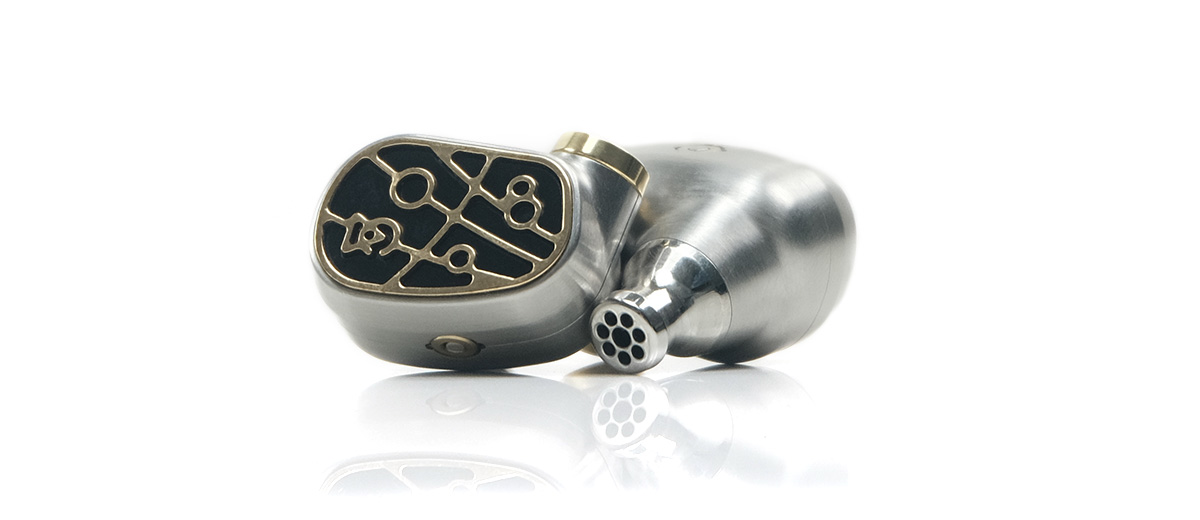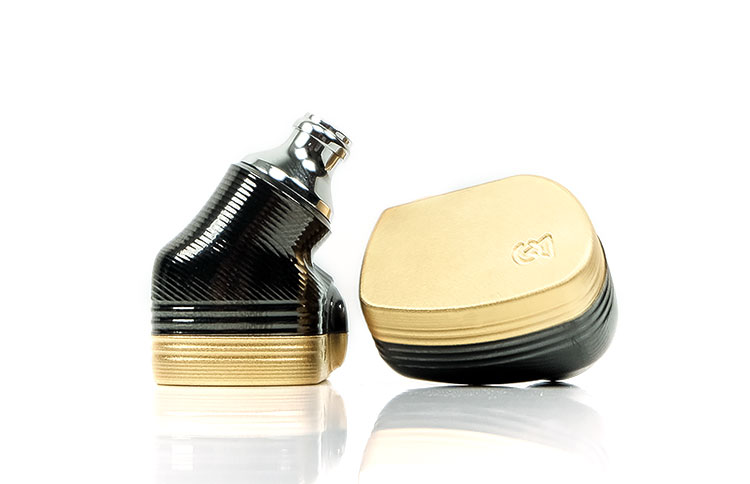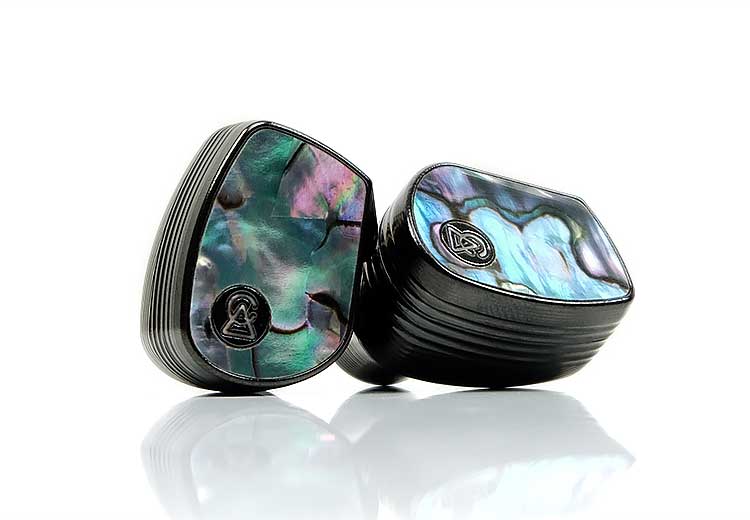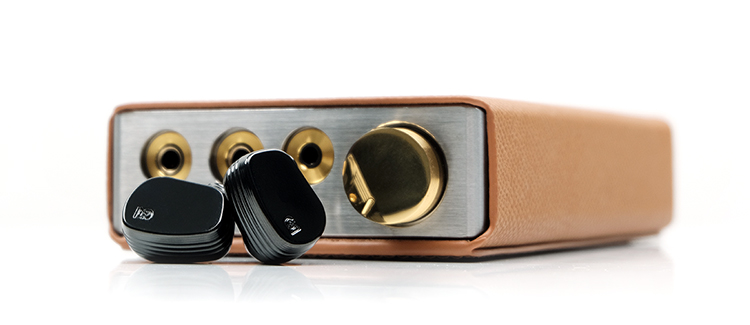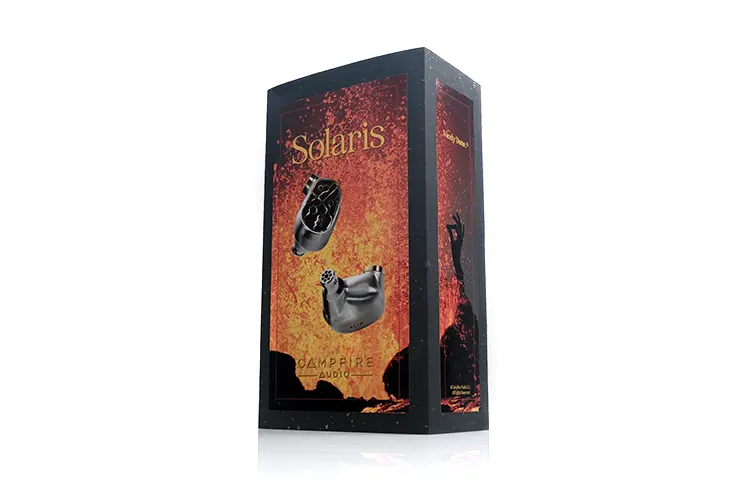Select Comparisons
The following comparisons were made using a mixture of the HiBy RS8 and the FiiO M15s in low gain mode as our main sources combined with the Time Series 4.4mm balanced terminated stock cable for the Solaris Stellar Horizon.
Campfire Audio Solaris (OG)
The IEM that started it all, the original universal format Solaris was launched in 2019 with our review that same year. It also co-won our Top Gear Best Universal IEM Award for that year.
Technical
At a very broad level, both the original Solaris and the newer Solaris Stellar Horizon have the exact same hybrid driver configuration. Both offer a single 10mm A.L.D.C. dynamic driver with three custom BA drivers, one for the mids and two for the highs in combination with T.E.A.C. tubeless technology.
Where they differ markedly is in the choice of those BA drivers, combined with the acoustical chamber design for the dynamic driver.
Gone is the original Polarity Tuned acoustic chamber for the dynamic driver venting, gone is the rear-ported BA driver for the mids, and gone are the single diaphragm custom BA drivers for the highs.
In comes a new Radial venting design for the lows and one you can notice right away with the larger venting port on the side of the Solaris Stellar Horizon compared to the original.
Those custom BA drivers remain customized but also updated to Knowle’s new dual-diaphragm designs that are considered to be more powerful for their size and more natural sounding compared to the original drivers.
For impedance, the newer Solaris Stellar Horizon is an even lower load at 4.4Ω compared to 10Ω from the original. Sensitivity-wise, the OG Solaris ran under the older classic SPL and impedance system before Campfire changed to their newer Vrms/94 dB benchmark so there is no like-for-like measurement official available for SPL.
What I can say is that from our testing using the M15s on low gain, CA seems to have dialed back on the sensitivity of the Solaris Stellar Horizon a little compared to the OG but the gap isn’t huge.
Design
In terms of aesthetics, I have always appreciated the original Solaris design with its striking 24k gold-plated top and all-black contoured PVD-coated metal alloy body, with a stainless-steel nozzle.
It still looks classy and unique in 2023 though not as intricate or as smooth as the brushed stainless-steel and gold PVD-weaved aesthetic on the newer Solaris Stellar Horizon.
However, the OG form factor was and still is a chunky so-and-so, and combined with almost any type of foam tip its fat spout can put some uncomfortable pressure on the insides of your ear canal as well as stick a long way out of your ear.
The stock Final E tips at the time were my go-to for both performance and a more comfortable fit and they are the very tips I would have loved to have seen come stock with the Solaris Stellar Horizon.
Why? Because the Solaris Stellar Horizon is smaller and fits so much better than the original. It sticks out way less, even with the foam tips though I still prefer to use a size down on the tip selection for better penetration and comfort. The stock silicone does not isolate or grip as well in my ear which is where a set of Final E tips would have sealed the deal.
The extended MMCX connector stems on the Solaris Stellar Horizon look a bit stronger now also compared to the flush sockets on the OG Solaris.
The Time Series cables are also a substantial upgrade in terms of looks and handling compared to the Super Litz cable from the OG. The OG stock cable is lighter but terminated only with a single choice of a balanced or single-ended jack.
Performance
I think the immediate takeaway from comparing these two is just how much more expansive sounding the Solaris Stellar Horizon is compared to the original tuning.
Especially in terms of width and the way spatial cues flicker with more intensity right across the extreme ends of the stereo field. There is a distinct perception of improved instrumental separation, aided no doubt by a milder 1-2k bump compared to the stronger level of gain over the same region from the original Solaris.
This milder level of midrange gain, or slightly south of the Harman Target curve, is something I am seeing more often in high-end monitors such as the Multiverse Mentor and Viking Ragnar which are two such examples.
It does give you a stronger perception of distance from the stage and improved presence for surrounding instruments, something which the original Solaris does less well. Vocals do come more to the fore on the Solaris but the comparative lack of energy from 4-7k gives it a narrower quality to its stereo field.
The original is warmer with more bloom on the lows. The newer bass tuning extends just as well but with less bloom and a more accurate sound. There is less bass bleed and a bit more space for the Solaris Stellar Horizon low-end layering to shine over the original as a result.
There is also a definite difference in the treble tuning between these two. The Solaris Stellar Horizon has more energy from 4-8k but it’s fairly evenly distributed up to 10k offering more air and sparkle but lacking harshness.
The original Solaris is more recessed up to 8k and there is a comparative lack of energy as a result but still picks up some treble overtones in the mids courtesy of its stronger pinna gain.
Campfire Audio Solaris SE
The Solaris Special Edition or SE came fairly quickly in 2020 and truth be told it has been my go-to Solaris version for its mids tuning. At the time of writing it is also the version currently ranked the highest by our readers in our Top Reader Voted Earphones list.
Technical
Again, the basic makeup of the driver configuration is unchanged between these two with both being a hybrid single 10mm A.L.D.C. dynamic and a triple custom BA driver configuration with T.E.A.C.
And much like the original the changes and improvements are quite similar with a switch from the SE’s Polarity Tuned chamber to Radial venting for the dynamic lows combined with a larger venting port and a move to the new dual-diaphragm BA drivers for the mids and highs inside the Solaris Stellar Horizon.
However, what changed from the original to the SE is worth pointing out because some of it is not duplicated inside the Solaris Stellar Horizon.
This includes a unique mids driver choice which is not the same as the OG Solaris though not dual-diaphragm. A driver that went some way to changing the tone of the mids from the original.
The second difference from the OG was a move to a new expensive high-density ceramic material for the acoustical chamber combined with a reshaping of the internal space to further enhance the SE’s staging and vocal performance.
The SE specifications are unchanged from the original Solaris so that means a slightly heavier load than the Solaris Stellar Horizon at 10Ω compared to 4.4Ω.
It also means the SPL measurement system of the SE is very different and not a like-for-like. Our subjective testing with the balanced output of the HiBy RS8 in low gain Turbo mode produced more or less the same result as the OG comparison with the SE sounding a little more sensitive when volume matched.
Design
This is the Solaris aesthetic that I feel is on par with the updated Solaris Stellar Horizon version. Not so much the main body shell which is the bigger and bulkier of the two and as such the compact brushed stainless-steel body of the Solaris Stellar Horizon is superior for both fit and comfort levels.
Rather, it’s the dreamy aquatic overtone of the Abalone face plate that I adore from the SE, and it’s just as striking as the gold PVD weave on the smaller face plate of the Solaris Stellar Horizon.
Of course, beauty is in the eye of the beholder and you might differ in that opinion but it is nevertheless a head-turner, even in 2023.
The form factor is less so. It’s the old format so it’s bulkier meaning all the issues of the original fitting moved to the SE with the only key difference coming from the enhanced comfort around the ear from the lighter memory wrap on the SuperLitz cable.
That does mean the Solaris Stellar Horizon is generally the comfier of the two and also the flusher fit giving it more flexibility for longer listening sessions. The SE did come with the Final E tips as a stock choice so there is a small advantage there if you are a Final E fan.
I still favor the Solaris Stellar Horizon Time Series cables over the SE version which is the original Solaris SuperLitz stock cable with improved memory coating that is thinner and shorter. It’s more comfortable than the OG wire but its handling and performance are below that of the Time Series.
Performance
The SE was my preferred version of Solaris up until the Stellar Horizon. It has a slightly warmer more organic-sounding midrange and better vocal presence than the original.
Compared to the Solaris Stellar Horizon it still has that warmer more rounded tone but now you can hear a comparative lack of presence from 3-7k on the SE that mutes a lot of the treble energy giving it more of a bass to mids bias up to 2k.
That creates the additional warmth and places the vocals front and center on the SE but also diminishes the headroom giving it a slightly darker tone over the original.
By contrast, the Solaris Stellar Horizon has no such lack of treble energy and plenty more additional headroom. It has less of a pushed vocal presence, and a flatter controlled lower mids giving it more of a neutral and cleaner tone.
The soundstage is wider, and the imaging is more dynamic and pinpoint giving a stronger perception of additional clarity. Overall, this is a more coherent and expansive presentation from top to bottom with perhaps a slight treble bias but nothing overly exaggerated.
Still, I don’t think you should consider the Solaris SE as obsolete. I still love that thicker bass combined with the warmer lower mids that provide for smooth voicing. It’s not as technically strong as the Solaris Stellar Horizon but can be a vocal fan’s favorite at times.
Campfire Audio Solaris 2020
The final edition in our comparisons is the Solaris 2020 version which was also released not long after the SE, (in 2020), and in terms of critical path development, a true second-generation design.
Technical
Although the hybrid single 10mm A.L.D.C. dynamic driver and triple custom BA configuration remain true for both models, the 2020 version probably has some more substantive changes when compared to the previous Solaris edition.
For example, though the 2020 edition still used the previous generation Polarity Tuned Chamber and smaller venting system compared to the Solaris Stellar Horizon radial venting technology it was the first Solaris to incorporate CA’s Solid-Body acoustic design.
This was a rollout for a number of models in this era, including the Andromeda 2020, with the tuning chambers directly printed and combined with an optimized 3D construction right into the final shell design.
I am pretty sure though the 2020 edition does not use dual diaphragm balanced armature drivers since this was a recent launch from Knowles back in 2022. I would presume the SE mids driver did make its way into the 2020 version, however.
The specs also changed for 2020 with a higher level of impedance at 15.5Ω compared to just 4.4Ω for the Solaris Stellar Horizon but importantly we now have a like-for-like comparison for sensitivity at 6.54 mVrms to hit 94 dB SPL @ 1kHz.
The Solaris Stellar Horizon equivalent is 9.145 mVrms for the same benchmark so I suspect those new drivers might be sucking up a bit more juice than the older versions. Indeed, in our subjective testing with a Cayin N8ii balanced output in low gain with P+ turned on, the 2020 Edition was marginally more sensitive.
Design
Aesthetically, the all-black finish of the Solaris 2020 is a rather muted affair compared to the two-tone PVD-patterned dazzle and brushed aluminum shell of the Solaris Stellar Horizon design. The additional gold PVD finish on the MMCX stems on the newer design gives it a classier finish to my eyes.
Granted, of all the compared editions the 2020 form factor is the most competitive when squared off with Horizon with a similar size. It is just a shade bulkier around the nozzle and marginally bigger on the plate but both are a lot smaller than the OG and SE editions making them more comfortable in the ear.
The Stellar Horizon version shades courtesy of more ‘nip and tuck’ around the spout and a slightly flatter top side on the outer ring of the main shell giving it more room to fit a bit flusher in the ear.
Neither comes with Final E tips, just marshmallows, and foams but the thicker spout of the 2020 edition makes for a bit more pressure in the ear so again an advantage to the latest design in terms of pure comfort.
Neither really has an edge in passive isolation which largely comes from the tips being used and both offer the same tips selection.
The Solaris 2020 did come with an upgraded 4-core Smoky Litz cable using Silver-Plated Conductors and multi-sized stranding. The Time Series also uses SPC but it looks nicer with a flatter structure for improved handling capability.
Still, the Smoke Litz is a far lighter cable and both have excellent low microphonics performance but with 2020 you only got one 3.5mm terminated version whereas here, you get 3 balanced and unbalanced options and more flexibility.
Performance
The 2020 Edition is the warmest sounding of the compared models and one I would also classify as the most forgiving. However, it’s all about the information and it presents less of it compared to the Solaris Stellar Horizon.
Comparing the two is like taking an old-school SETA amplifier and upgrading to a modern push-pull resistor-based solid-state alternative. It might be cooler for the timbre and brighter in the highs, but you are going to hear much-improved dynamics, a lot more air in the mids, and a definite upgrade in the level of detail coming through.
I think the big weakness of the 2020 model was its mids. Not so much the vocal presence, it is actually quite good around 2k with a nice thick male vocal timbre. Rather beyond up to 6-7k it’s quite flat and very south of the ideal Harman Curve losing both energy and air in the process.
That sort of compressed the energy there and kept the vocals and instruments hemmed in lacking a lot of comparative separation leaving the listener struggling to hear the same level of staging complexity and nuanced imaging that you can clearly pick out on the Solaris Stellar Horizon.
There is also a more elevated upper-bass to lower-mids presence on the 2020 model, which, I kind of like for the smoother and richer instrumental tone but it does tip the general timbre more to a rounded quality with notes lacking a little definition in comparison to the Stellar Horizon.
For me, the Solaris Stellar Horizon has the more accurate harmonic balance and yes notes are not quite as thick with its flatter upper bass keeping out a lot of potential bass bleed but I think that’s a plus for its airier mids quality rather than a con.
Our Verdict
The Campfire Audio Solaris Stellar Horizon is the most mature tuning I have heard to date on this series of IEMs that started way back in 2019.
I wouldn’t go as far as to say it’s a reference offering, there is a degree of individuality that still sets it apart from the competition out there. However, it does bring it closer to the likes of the Andromeda with a more balanced tuning, improved resolution, and an excellent and very open soundstage.
This is a beautiful-looking IEM. No denying that this time Campfire has got the balance right between looks and size. It is much comfier than the older editions though the cold steel after a blast from the aircon might wake up your ears for the first few seconds.
What could be improved? I say bring back the Final E tips if you can and similar to the Trifecta critique, one cable with multiple connectors would have been more efficient than three separate ones.
This is also a tuning that might disappoint those looking for a heavy-duty bass response. I mentioned the Trifecta already, bassheads will find that more to their liking.
If you want something aimed more towards critical listening or something much more balanced sounding and flexible for a wider range of musical tastes, then the Campfire Audio Solaris Stellar Horizon is the better choice.
Campfire Audio Solaris Stellar Horizon Specifications
- 5Hz–20 kHz Frequency Response
- 94 dB SPL @ 1kHz: 9.145 mVrms
- 4.40 Ohms @ 1kHz Impedance
- Less than 0.5% Total Harmonic Distortion

